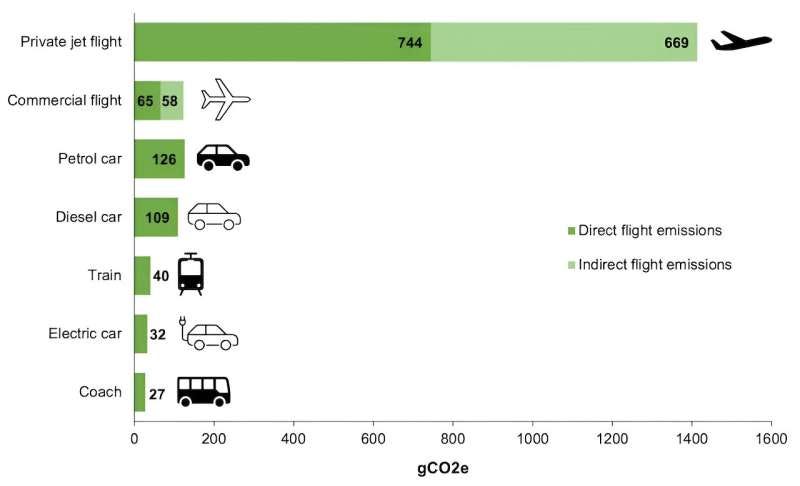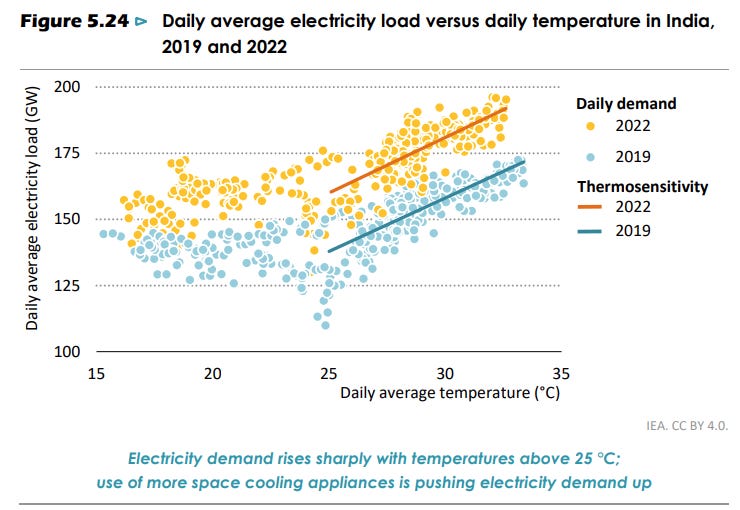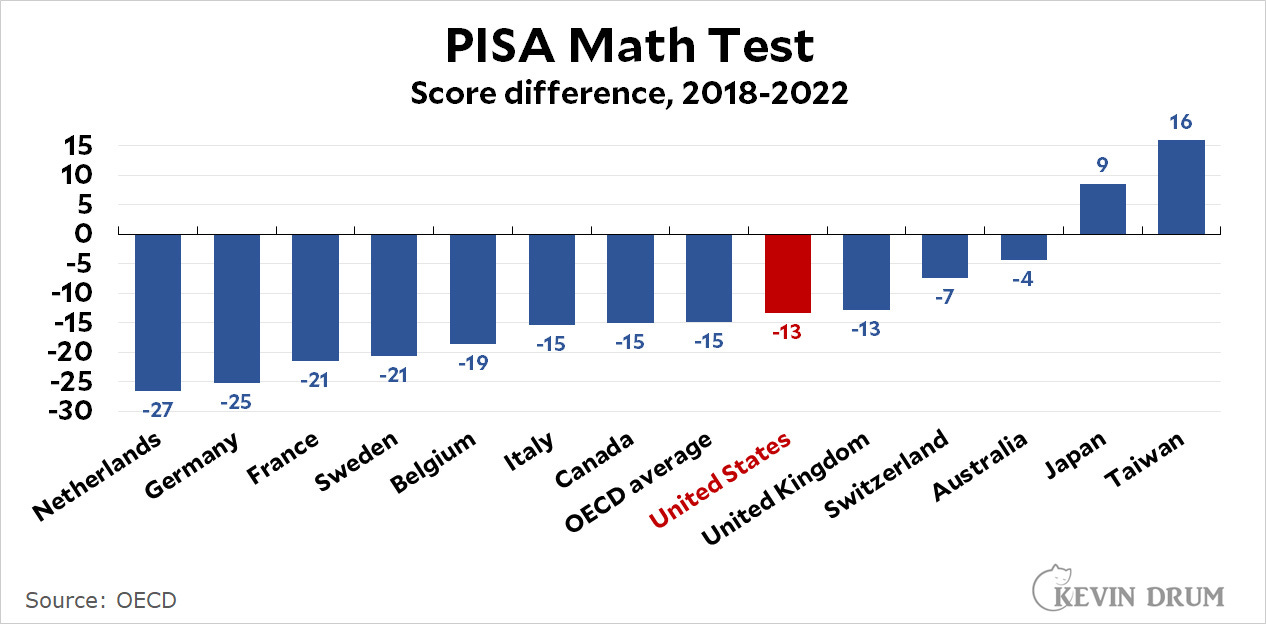Quick Takes and Random Stuff Dec 7, 2023
Anchovies, India and AC, air travel, city vs rural, and more
Graph of the week
From the journal article Shrinking body size of European anchovy in the Bay of Biscay (11/28/2023)
This one is well done and needs no explanation. I also appreciate the maps. The regression charts don’t need them, but they really add nice context.
India wants more AC
This is from the Guardian (12/5/2023):
For Muskan, the arrival of summer in Delhi is the “beginning of hell”. As temperatures in her cramped, densely populated east Delhi neighbourhood often soar above 45C (113F), she dreams of only one thing: air conditioning.
I can’t blame them for wanting AC. What are the predictions?
Between 8% and 10% of the country’s 300m households – home to 1.4 billion people – have an AC, but that number is expected to hit close to 50% by 2037, according to government projections. A report by the International Energy Agency (IEA) predicts that by 2050, India will have more than 1bn ACs in operation.
I find it common that media sites like the Guardian avoid linking outside their own site. They should link to the IEA report but they don't; I did. Here is a related graph from their report and a key paragraph:
The growth in ownership and use of air conditioners and other cooling equipment is also one of the key drivers of the increase in peak electricity demand in India. In the STEPS, peak electricity demand rises around 60% from the 2022 level by 2030 and cooling accounts for nearly half of this increase. In the APS, however, the implementation of building codes, the use of more efficient appliances and the adoption of demand response measures enable the same cooling needs to be met with less energy. This reduces peak electricity demand growth by nearly one-quarter compared to the STEPS. Given that the electricity system is sized to meet peak demand, lower peak demand helps to lower electricity investment needs and system costs. Although solar PV matches well with daytime cooling needs, cooling demand is also significant in India during the late evening and at night. Lowering cooling demand through energy efficiency policies therefore reduces the need for investment in batteries or expensive standby generation capacity, and thus helps to integrate renewables more cost effectively.
First, the acronyms: Stated Policies Scenario (STEPS) and Announced Pledges Scenario (APS). When you read these reports, you should decide whether you think a country will hit its announced pledges in terms of energy use or the direction it seems to be headed, STEPS. In the end, STEPS and APS probably give good lower and upper bounds on energy use and where it comes from.
The AC issue in India is a good case study of the tensions around climate and CO2 emissions. On one hand, the people of India deserve the same comforts as everyone else, and we can all understand their desire for AC. On the other hand, it is really hard to do this without fossil fuels and more CO2 emissions. Solar only helps so much due to nighttime heat; again, solar has limitations. So, we need solar, batteries, efficiency, a more complex system, or more coal. Any bets on how this plays out for the next 20–30 years? Here are the IEA predictions:
Are you betting on STEPS, the solid line, or APS, the dotted line? Either way, India is going to emit more CO2, in fact, at least 50% more (yellow graph). This is a fundamental tension in the issue of climate change that gets little attention. Poor countries want a better life. Fossil fuels are still the more affordable and easier option. This means more CO2 emissions. Should the poor stay poor to keep emissions down, or do they get to burn fossil fuels too?
More air travel
From TechXplore (12/6/2023)
The International Air Transport Association (IATA), in its traditional review of industry trends as the year draws to a close, said more normal growth patterns were expected from here on out as the sector has recovered to pre-pandemic levels.
"People love to travel and that has helped airlines to come roaring back to pre-pandemic levels of connectivity," IATA's director general Willie Walsh said as the body forecast a record 4.7 billion people will take to the skies in 2024.
ATA noted this is a "historic high that exceeds the pre-pandemic level of 4.5 billion recorded in 2019."
For this year, it expects 4.29 billion passengers, a small drop from its June forecast of 4.35 billion.
The trends aren’t compatible with reducing worldwide CO2 emissions. Climate activists generally aren’t willing to say that we don’t have the technology to reduce CO2 without reducing the standard of living. Keep in mind that it isn’t poor people doing all this air travel. Now I’ve noted that air travel is only a minor CO2 contributor in the post What a climate change poll likely really says:
Figure 2 shows that flying only contributes a small amount to world emissions, but of the 40% of people who fly at least once a year (2021 data), more than half of them only take one or two trips. This leaves about 15% that take multiple trips, whose “few flights a year” can add up. In the end, flying doesn't add much to greenhouse gases, and only a small number of people have much to cut.
The point here is that this is evidence that we don’t want to reduce our standard of living. In fact, it is the opposite; people want more, not less. Just like India wants its AC, others want to travel.
Flying private to the climate conference
Just saying.

Two good reads from Substack
The first is from Robert Bryce. His article, Michigan Dems Big Foot The Locals (12/7/2023) gives an overview of how legislatures are overruling local zoning in favor of wind and solar and against rural communities.
In passing the legislation, Michigan became the fourth state controlled by Democrats to strip rural communities of their zoning authority and give it to bureaucrats in their respective state capitals.
This seems to be quietly happening and simply adds to the narrative that the liberal elite city folk are happy to trounce on the rights of rural folks.
The vote in Michigan shows, again, the enormous political and cultural divide between urban America and rural America. Democrats don’t care about rural America. They don’t get votes from rural Americans, so their attitude is, to put it bluntly: “fuck them.”
There is a lot of context in this article, and it is worth reading.
Jonathan Haidt’s After Babel has been reporting on mental health issues among youth. His recent post, Why I'm Increasingly Worried About Boys, Too (12/6/2023), is yet another in his series that everyone should read.
Back when I was focused on anxiety and depression as the dependent variables, the story of technology (as the independent variable) seemed to be a story that was mostly about girls. But once I read an early draft of Richard Reeves’s book Of Boys and Men, I realized that I had been focused on the wrong dependent variables. For boys and young men, the key change has been the retreat from the real world since the 1970s, when they began investing less effort in school, employment, dating, marriage, and parenting.
And all of this withdrawal happened before the arrival of the metaverse, which is just now taking shape, and before the arrival of increasingly compelling, witty, attractive, and customizable AI girlfriends. The virtual world is becoming ever more immersive and addictive. Every year it will pull harder and harder on boys, urging them to abandon the real world. We’ve got to make the real world more appealing for them.
It isn’t COVID
Haidt has been making the point that mental health issues started long before COVID. Right now, education seems to be blaming a lot on COVID, and I don’t think they should be. Drum provides more evidence in his post US does surprisingly well on COVID-era declines in latest PISA math test (12/5/2023). A graph and a quote.
This fits with data suggesting that school closures had little effect on test score declines within the US. Put everything together and the evidence is pointing ever more strongly to the conclusion that COVID test declines were unrelated to school closures. The real cause of the declines, then, remains a bit of a mystery. Perhaps just overall stress from the pandemic?
Note that Japan and Taiwan made improvements during COVID. I bet you aren’t surprised. Were they just not stressed from the pandemic? Why? Maybe we should try to find out what they are doing so well.
Data you can use
I’m a little late on this, but be careful with your holiday decorating. From USA facts (11/22/2023)
Every year, around 18,400 people[1] visit emergency rooms because of accidents with Christmas decorations. The peak day for these mishaps is usually the Sunday after Thanksgiving, when an annual average of 660 people seek medical attention for their injuries.
Home prices
The article, Where we build homes helps explain America’s political divide (11/24/2023), has lots of graphs and data from the Washington Post. I’ll post one graph here that seems shocking. The average monthly mortgage has doubled in only a few years. This doesn’t seem sustainable.
The spinning CD
Fun song from the Mad Caddies. Palm Trees and Pines
Please share and like
Please help me find readers by forwarding this article to your friends (and even those who aren't your friends), sharing this post on social media, and clicking like. If you're on Twitter, you can find me at BriefedByData. If you have any article ideas, feedback, or other views, please email me at briefedbydata@substack.com.
Thank you
In a crowded media market, it's hard to get people to read your work. I have a long way to go, and I want to say thank you to everyone who has helped me find and attract subscribers.
Disagreeing and using comments
I'd rather know the truth and understand the world than always be right. I'm not writing to upset or antagonize anyone on purpose, though I guess that could happen. I welcome dissent and disagreement in the comments. We all should be forced to articulate our viewpoints and change our minds when we need to, but we should also know that we can respectfully disagree and move on. So, if you think something said is wrong or misrepresented, then please share your viewpoint in the comments.










